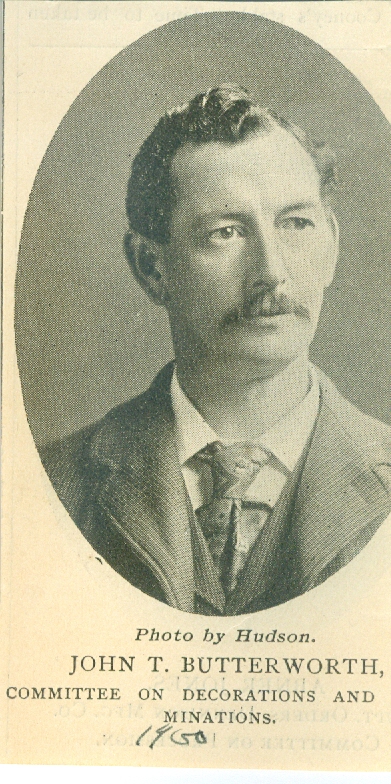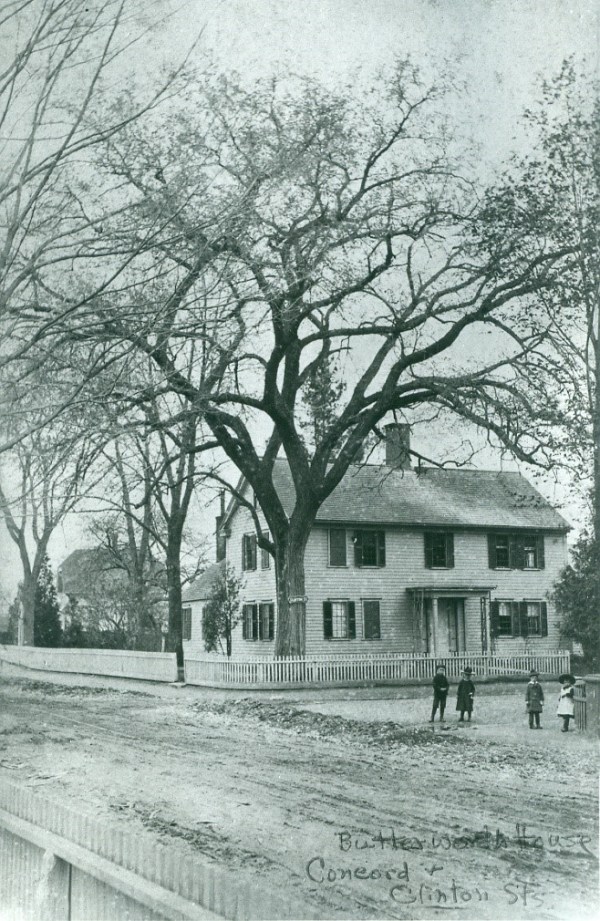Some people thought of Framingham as “Tag Town” because of the Dennison Manufacturing Company, but others knew it as the home of the beautiful orchids in Butterworth’s greenhouses.
John T. Butterworth (1856 – 1927) was born in Middleton, Lancashire England and at the age of eight and a half was bound to a five year apprenticeship earning four shillings a week. He walked three miles to his job every day and worked from dawn to dusk. Completing his apprenticeship he worked many places in England but wished to be “on his own.” He came to America where he took over a greenhouse on concord Street and built it into one of the largest and best known nurseries for rare and exotic plants. He raised carnations, orchids, calla lilies, roses and hyacinths in twelve greenhouses where St. Stephens now stands. In 1908 the Town tapped Butterworth’s horticultural talent when the Park Commission was established. He served on the Commission with Nathaniel Bowditch and Harry Winch. The three largest of these Framingham parks are named Butterworth, Bowditch and Winch for these commissioners.

George W. Butterworth, John’s son, suggested that they specialize in orchids. John at first was reluctant, he didn’t want to put all his eggs in one basket, but he went along with the idea. The orchid business was hugely successful.
In June of 1924, John Butterworth was honored by the Massachusetts Horticultural Society with a first class Certificate of Merit and the Society’s Gold Medal for his Catleya mossiae var. Mrs. J. T. Butterworth. This white orchid plant later sold for $10,000.
The Butterworths obtained bulbs from South America, and the Orient as well as other parts of the world. Their rare plants had value into the thousands.
They grew orchid plants from seed and were recognized as leading authorities. From the Framingham greenhouses orchids were shipped all over the United States.

The Butterworth greenhouses were razed in the early 1960s (several years before 1964) by George W. Butterworth to clear the 2 acre site.
On April 2, 1964, Pastor Brown of St. Stephen’s Church purchased the approximately two acres of land from Rachael Butterworth Dietz, John’s daughter. The Butterworth house was razed in June 1964 and, subsequently, on October 21, 1964 ground was broken for the modern building to replace the old church built in 1883 at the site on Concord Street.
John T. Butterworth’s philosophy celebrated the blessing of a tired body, the blessing of having a share on the creation of beauty, the blessing of continual adventuring, and the blessing of tranquility.
Bibliography
“Acquire Site for Church.” Framingham (Mass.) News, April 6, 1964.
Head, Buckley. “Framingham Greenhouse Dates Back to Year 1848.” Framingham News, July 16, 1951.
Herring, Stephen, Framingham An American Town, The Framingham Historical Society, The Framingham Tercentennial Commission, 2000.
Lucier, Virginia. “Butterworth’s grew famous orchids here.” The South Middlesex News, June 10, 1975.
Temple, J. H., The History of Framingham 1640-1880, The Town of Framingham, 1887.
White, Prof. F. A. American Orchid Culture, DeLaMare Garden Books, New York, 1927.
Framingham News, April 6, 1964 Framingham News, June 13, 1964.